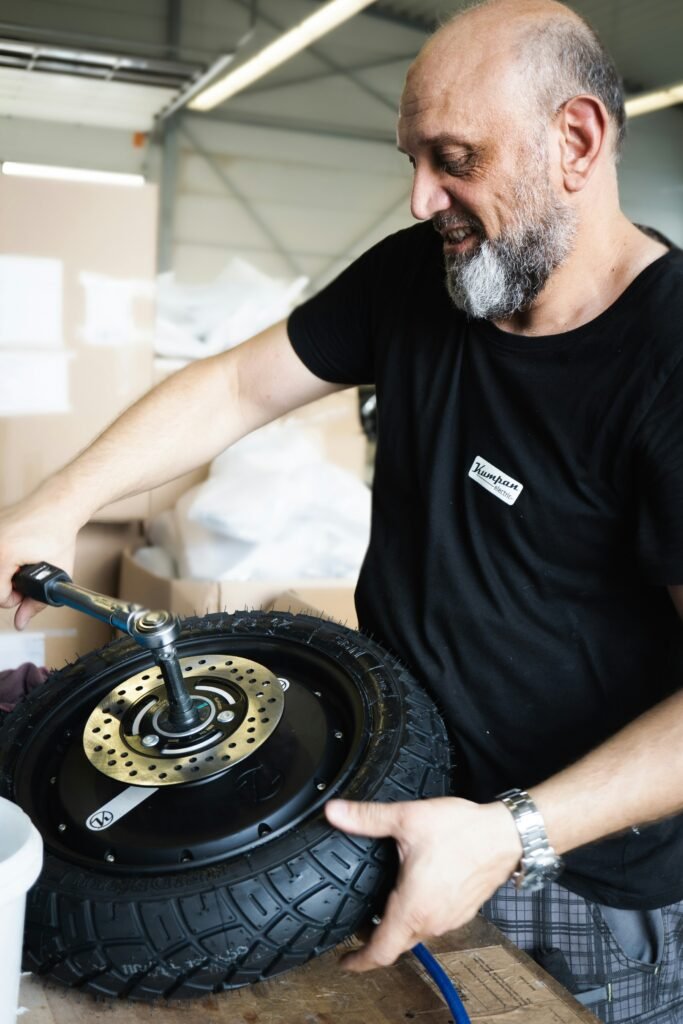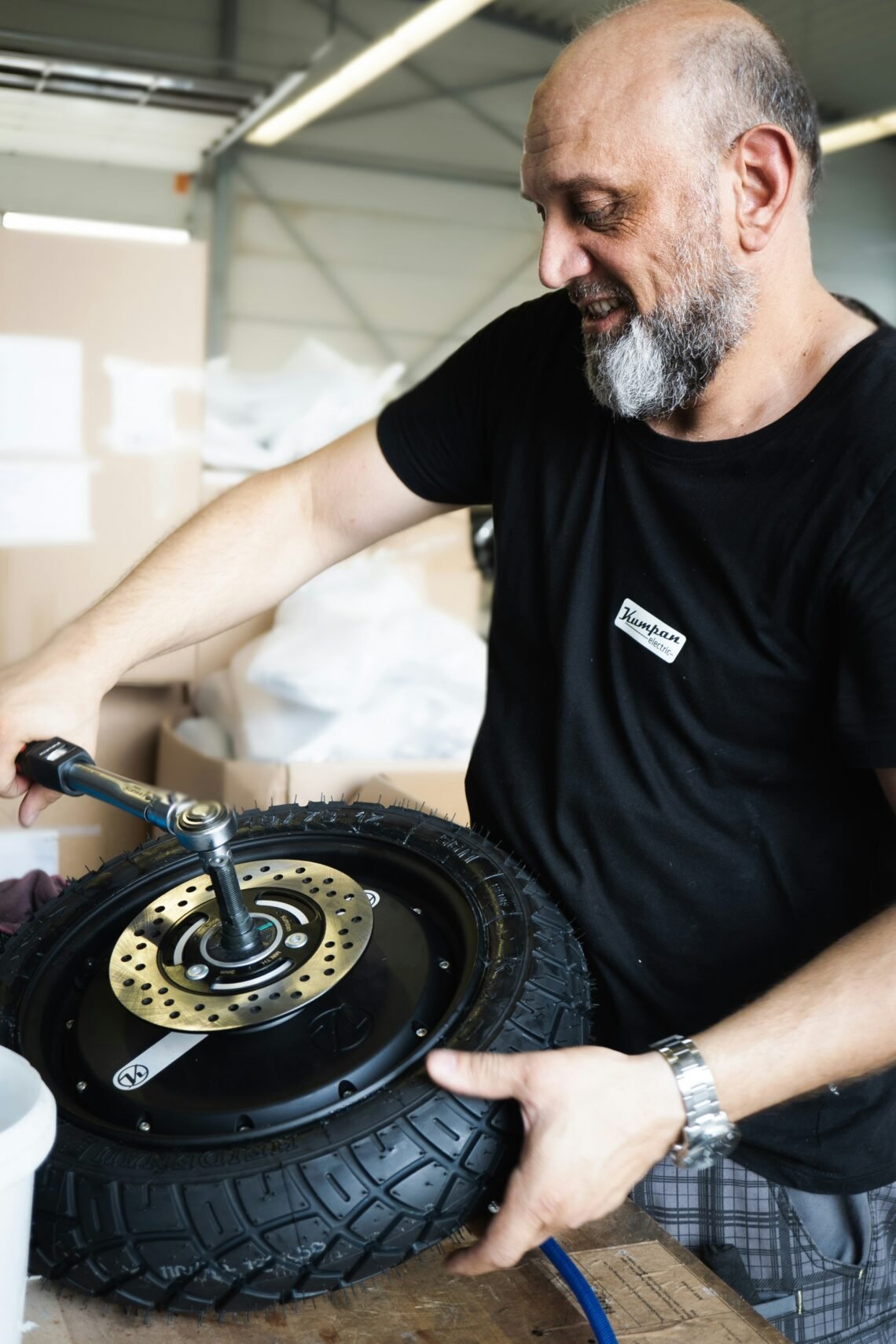Tire manufacturing has undergone a remarkable transformation in recent years, with technological advancements and shifting consumer demands driving the evolution of the industry. From the integration of advanced materials to the adoption of automation and sustainability measures, the tire manufacturing landscape is continuously adapting to meet the needs of today’s motorists. In this article, we will explore the key trends reshaping the world of tire manufacturing, and the implications they have on both the industry and consumers like you. So fasten your seatbelts and get ready to explore the fascinating changes taking place in this ever-evolving field.

This image is property of images.unsplash.com.
Evolving Materials
Use of synthetic rubber
With advancements in tire manufacturing, the industry has seen a significant shift towards the use of synthetic rubber. Synthetic rubber offers several benefits over natural rubber, such as improved durability, resistance to wear and tear, and enhanced grip on various road surfaces. Moreover, synthetic rubber is more resilient to extreme temperatures and chemical exposure, making it a reliable choice for tire production. The utilization of synthetic rubber in tire manufacturing has increased the overall lifespan and performance of tires, providing consumers with a safer and more efficient driving experience.
Increased use of sustainable materials
In response to the growing concern for environmental sustainability, tire manufacturers have been actively incorporating sustainable materials into their production processes. Sustainable materials, such as natural rubber sourced from responsibly managed plantations, help reduce the carbon footprint associated with tire manufacturing. Additionally, manufacturers are exploring alternatives like plant-based materials to decrease their reliance on non-renewable resources. By promoting the use of sustainable materials, the tire industry aims to contribute towards a more environmentally-friendly and socially responsible future.
Advanced Manufacturing Techniques
Automation in tire production
Automation has revolutionized the tire manufacturing process, enabling higher production efficiency and quality control. Through the use of robotics and automated machinery, tasks that were previously labor-intensive and time-consuming can now be completed with greater precision and speed. Automated systems ensure consistent product quality, reduce the risk of human error, and optimize production output. By adopting automation in tire production, manufacturers can meet the increasing demand for tires while ensuring cost-effectiveness and maintaining high standards of safety and performance.
3D printing technology
The emergence of 3D printing technology has had a profound impact on various industries, including tire manufacturing. This innovative technique allows the production of complex tire designs with intricate patterns and structures. 3D printing enables the customization of tires according to specific performance requirements and individual preferences. Additionally, this technology enables the production of lightweight and durable tires that can enhance fuel efficiency and reduce emissions. As 3D printing continues to evolve, its integration into tire manufacturing processes is expected to bring further advancements in terms of design flexibility and production efficiency.
Smart Tire Technology
Integration of sensors
Smart tire technology incorporates sensors into the tire construction to monitor various parameters and provide real-time data. These sensors can measure tire pressure, temperature, tread wear, and even road conditions. By collecting and analyzing this data, smart tires enable improved safety, performance, and efficiency. For instance, sensors can detect low tire pressure and alert the driver, reducing the risk of accidents and improving fuel efficiency. The integration of sensors into tire manufacturing reflects the industry’s commitment to leveraging technology for creating smarter and safer driving experiences.
Tire pressure monitoring systems
Tire pressure monitoring systems (TPMS) have become an integral part of modern tire manufacturing. TPMS continuously monitors the air pressure inside the tires and alerts the driver if there are any deviations from the recommended pressure levels. Maintaining proper tire pressure improves fuel efficiency, extends tire lifespan, and enhances overall vehicle safety. By integrating TPMS into tire production, manufacturers contribute to safer roads and help drivers take proactive measures for maintaining optimal tire performance.
Connected Manufacturing
Internet of Things (IoT) in tire manufacturing
The Internet of Things (IoT) has revolutionized various industries, and tire manufacturing is no exception. IoT technology enables the interconnectivity of machines, equipment, and systems, creating a smart manufacturing environment. In tire manufacturing, IoT can facilitate real-time monitoring of production processes, inventory management, and quality control. By leveraging IoT, manufacturers can optimize production efficiency, reduce downtime, and enhance overall productivity. The integration of IoT in tire manufacturing promotes seamless communication and collaboration among different stages of production, leading to improved product quality and customer satisfaction.
Connected supply chain
To streamline operations and enhance efficiency, tire manufacturers are adopting connected supply chain systems. Through the use of advanced data analytics and communication technology, manufacturers can track and manage the flow of raw materials, components, and finished products throughout the supply chain. Connected supply chain systems enable real-time visibility, efficient inventory management, and faster response to market demands. By embracing a connected supply chain, tire manufacturers can better fulfill customer orders, reduce costs, and ensure timely delivery, ultimately contributing to an optimized and customer-centric manufacturing process.

This image is property of images.unsplash.com.
Green Initiatives
Reduced energy consumption
As sustainability becomes a key focus for the tire industry, manufacturers are actively implementing measures to reduce energy consumption in the production process. Energy-efficient machinery, optimized production layouts, and the use of renewable energy sources are some of the strategies employed. By minimizing energy consumption, manufacturers can reduce their environmental impact and contribute to the overall sustainability of the industry. Moreover, reduced energy consumption leads to cost savings, making it a win-win situation for both manufacturers and the environment.
Recycling and reuse programs
Tire manufacturers are increasingly implementing recycling and reuse programs to address the issue of tire waste. Through these programs, worn-out tires are collected, recycled, and repurposed into various products, such as rubberized asphalt, playground surfaces, or even new tire compounds. By promoting recycling and reuse, manufacturers not only minimize the environmental impact of tire waste but also conserve valuable resources. These initiatives contribute to the circular economy and foster a more sustainable approach to tire manufacturing.
Customization and Personalization
Enhanced tire performance based on individual needs
Advancements in tire manufacturing techniques have enabled greater customization and personalization options for consumers. Manufacturers can now tailor tires to meet specific requirements and preferences. Whether it’s optimizing tires for different weather conditions, vehicle types, or driving styles, customization allows for enhanced performance and safety. By offering personalized tire solutions, manufacturers cater to the diverse needs of consumers and provide them with tires that deliver superior performance and peace of mind.
Unique tire designs and patterns
Gone are the days of standard tire designs. With the advent of advanced manufacturing techniques, tire manufacturers can now create unique tire designs and patterns. These designs not only enhance the aesthetics but also improve grip, handling, and traction. Innovations like 3D printing and computer simulations enable the development of intricate and optimized tire designs. Unique tire designs not only provide a visual appeal but also contribute to the overall performance and safety of the vehicle.

This image is property of images.unsplash.com.
Quality Control and Testing
Adoption of advanced testing methods
To ensure the highest level of quality and safety, tire manufacturers are adopting advanced testing methods. These methods involve rigorous testing under various conditions to assess performance, durability, and reliability. Advanced testing techniques, including computer simulations, dynamic testing, and endurance testing, allow manufacturers to gather precise data on tire behavior and performance. By continuously improving testing methods, manufacturers can deliver tires that meet strict quality standards and exceed customer expectations.
Strict quality standards
Maintaining strict quality standards is of utmost importance in the tire manufacturing industry. From the selection of raw materials to the final inspection of finished tires, manufacturers adhere to comprehensive quality control measures. Strict quality standards ensure that tires meet regulatory requirements, perform optimally, and provide the desired level of safety. By prioritizing quality control, tire manufacturers instill confidence in consumers and demonstrate their commitment to delivering high-quality products.
Automated Inspection Systems
Machine vision technology
To enhance inspection efficiency and accuracy, tire manufacturers are leveraging machine vision technology. Machine vision systems utilize cameras and image analysis algorithms to detect defects, measure dimensions, and assess the overall quality of tires. While human inspectors can sometimes miss subtle defects, machine vision systems provide reliable and consistent results, ensuring that only the highest-quality tires reach the market. By incorporating machine vision technology into inspection processes, manufacturers can maximize productivity and minimize the risk of faulty products.
Robotics and AI in inspection
Collaboration between robotics and artificial intelligence (AI) has opened new possibilities in tire manufacturing inspection. Robotic arms equipped with AI algorithms can perform precise and repetitive inspection tasks with speed and accuracy. These advanced inspection systems can detect even the smallest defects and anomalies in tire construction, ensuring that only flawless tires are deemed fit for sale. By utilizing robotics and AI in the inspection process, manufacturers achieve higher inspection throughput, improved quality control, and enhanced overall productivity.
Data Analytics and Predictive Maintenance
Utilizing data for predictive maintenance
Data analytics plays a crucial role in modern tire manufacturing as it enables predictive maintenance practices. By collecting and analyzing data from various sources, including sensors and monitoring systems, manufacturers can identify potential issues and take proactive measures before tire performance is compromised. Predictive maintenance helps optimize tire lifespan, prevent unexpected failures, and reduce downtime. By leveraging data analytics, tire manufacturers can make informed decisions and ensure optimal tire performance throughout their lifespan.
Optimizing tire performance
The utilization of data analytics goes beyond predictive maintenance, as it enables manufacturers to optimize tire performance based on real-world data. By analyzing data on tire behavior, road conditions, and user feedback, manufacturers can fine-tune tire designs, compounds, and patterns to meet specific performance requirements. This data-driven approach ensures that tires deliver superior performance, safety, and comfort under different environments and driving conditions. Data analytics facilitate continuous improvement in tire manufacturing, leading to more advanced and efficient tire solutions.
Collaboration and Partnerships
Joint ventures between manufacturers and technology companies
In the evolving landscape of tire manufacturing, collaboration between tire manufacturers and technology companies has become increasingly common. Through joint ventures, manufacturers can leverage the expertise and resources of technology companies to accelerate innovation and development. Collaborations with technology companies enable the integration of cutting-edge technologies, such as IoT, AI, and data analytics, into tire manufacturing processes. By joining forces, manufacturers and technology companies drive advancements in tire technology and create innovative solutions that cater to the ever-changing needs of consumers.
Cooperation with research institutes
Cooperation with research institutes is another avenue for tire manufacturers to stay at the forefront of innovation. By collaborating with academic institutions and research organizations, manufacturers can tap into the latest research findings and technological advancements. Through these partnerships, manufacturers gain access to specialized knowledge and facilities that facilitate product development, testing, and optimization. The cooperation between tire manufacturers and research institutes ensures that tire production remains at the cutting edge of technology, fostering continuous improvement and staying competitive in the market.
In conclusion, the tire manufacturing industry is continuously evolving, driven by advancements in materials, manufacturing techniques, smart technology integration, sustainability initiatives, customization, quality control, inspection systems, data analytics, and collaboration. These trends emphasize the industry’s commitment to safety, performance, sustainability, and customer satisfaction. As tire manufacturers embrace these advancements, they pave the way for a future where tires are not only safer and more efficient but also align with the ever-changing needs and expectations of consumers.





